|

World Trade Center Ruins, October 31st 2001
(Photo by AP, Anonymous Photographer, New York)
Destruction and Reconstruction
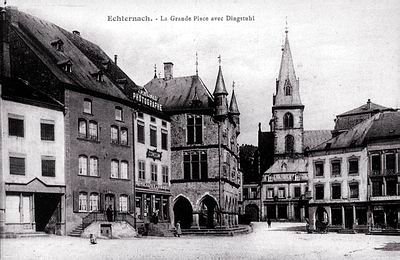
Grande Place in Echternach with Basilica in Background
Pre-War Situation
(Photo from Joel Crawford's Archives)
The beautiful cities of the past have been
agressed and destroyed, then rebuilt again and again so many times. Had there been times where humanity was not confronted
to war, illness, corruption, wickedness, barbary and destruction?
The 'Golden Ages',-- if there have been
some --, they have always been exceptional and short!
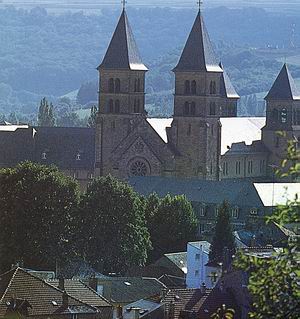
Echternach and its Basilica
(Photo by Lucien Steil)
The historical city of Echternach has been blown up in 1945 by the Nazi occupants leaving a heavily
destroyed city to the allied troops...The city and the basilica were rebuilt from 1950-1955 in a traditional
manner and became the very paradigm of the Post-War reconstruction in Luxembourg.
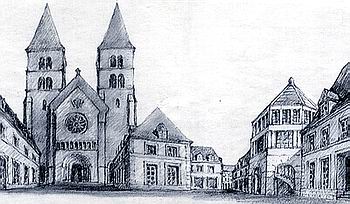
New Cultural Center in Echternach
by Rob Krier and Christoph Kohl
Now why should we expect architecture and
city-building to express ugliness and horror, confusion and disorientation, homelessness and alienation? Why should architecture
and city-building rather than build a human 'Patria', limit its role to celebrate the conflicts and shortcomings of our time?
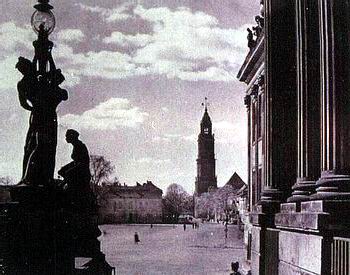
View of Lustgarten from Stadtschloss, Potsdam
Pre-War Situation
(Photo from Katarxis Archives)
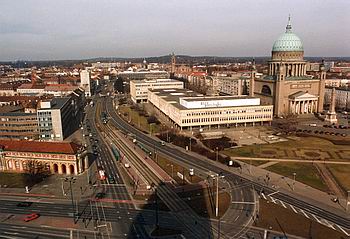
View of Potsdam "Historical Centre" with Schinkel's Nicolaikirche
Post-War Reconstruction on Former Stadtschloss Site
(Photo by Willi Engel, Berlin)
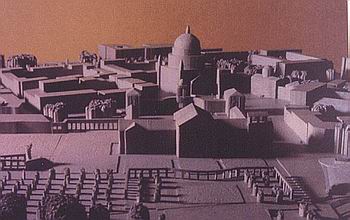
Reconstruction of Stadtschloss Site and Lustgarten, Potsdam
Prince of Wales's Urban Design Task Force 1996
(Photo: Prince of Wales's Institute of Architecture)
Reducing architecture and urbanism to compulsively
mirror the state of society and of contemporary apories is an absurd proposition in itself; there would not have been any
memorable, beautiful, inspring building, nor any comfortable and attractive city in the course of mankind's dramatic history!
Never would architecture, urbanism and human arts have possibly developed into highly sophisticated and civilized
arts!
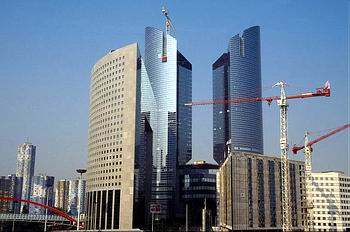
Shiny and Sculptural 'Zeitgeist' Statements
Unidentified Location
(Photo from Tripod Image Gallery)
Infact traditional architecture and city-building
have always been ideals of harmony and beauty in a more often than not destabilized and disrupted and thouroughly imperfect world!
Through centuries of glorious and tragical history, the traditional city has always remained a desirable model of urbanity,
of civilization, of good life and of a possible and buildable utopia...

Panoramic View of Luxembourg City
(Photo by Lucien Steil)
The contemporary view of Luxembourg's "Corniche" documents the admirable reconstruction of the city after
its destruction by the troops of Louis XIV. In about five years the city was rebuilt by French architects and Italian
and Austrian masons and carpenters. Despite the fact that the reconstruction endeavours were under foreign direction and execution
and based on perfectly rationalized typological methodologies, the reconstructed city recovered entirely its identity and
urban integrity, becoming more beautiful and comfortable than before, and reconciled with a memory of time and place!
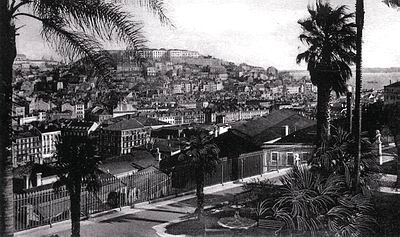
View of Lisbon at the Beginning of the XXth Century
(Photo from Joel Crawford's Archives)
Lisbon had been substantially destroyed by the terrible earthquake of the 1st of November 1755
It was rebuilt according the plans and under the supervision of the Marquis of Pombal in he most beautiful
and typologically rigorous manner.
Destroyed by natural calamities or human ones,
the traditional cities have most of the time been rebuilt on the same place and according to the same principles. Through
the aspirations of permanence, continuity and identity these cities were built on the ruins, footprints and memories of the
old ones. Rather than being archeologically the same ones, these rebuilt cities were improved, embellished and perfected to
adjust memory and modernity within the shared pattern of a collective urban culture.
| 